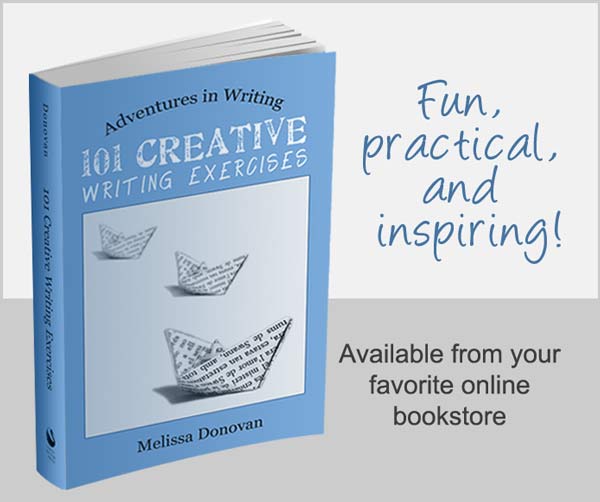Please welcome guest authors Evan Marshall and Martha Jewett with a post about indie publishing and the many benefits it offers fiction writers. This post contains affiliate links that earn commissions for this website from qualifying purchases.
A number of clients of Evan’s literary agency have begun to self-publish, or indie-publish, as a supplement to traditional publishing. For some of these authors, an activity that was meant as a promotional sideline has turned into the main event, with the indie-published books outselling the traditionally published ones.
These authors have discovered that indie publishing offers a number of advantages over traditional publishing. Here’s our advice for making the most of these advantages.
Genre-Busting
Traditionally published authors are all too aware of publishers’ demands in terms of category. A book must fit cleanly into one of a small set of genres on a publisher’s list: thriller, romance, mystery, and so on. Creativity is of course encouraged, but only within the realm of plotting; too much experimentation that results in a book straddling two genres is strongly discouraged. So for years, authors who wanted to get published and keep getting published played by these rules, some happily, some not so happily.
The not-so-happy authors yearned to experiment further. They wanted to meld their favorite genres in the interest of telling a better story, genre be damned. In today’s indie publishing, this is not only possible, it’s smart. This is because readers of indie-published fiction expect something different. They’re browsing the indie-published racks to find the kinds of books they’ve never been able to get from the traditional houses.
Some of the most successful indie fiction authors are stretching the boundaries in amazing ways. They’re coining new genres that, when successful, are plucked up by the traditional publishers and added to their list of genres.
Ciara Knight describes having to come up with a genre for her novel Weighted: ultimately she ended up with “post-apocalyptic, futuristic, Biopunk, Cyberpunk, Steampunk, romantic elements, fantasy, paranormal.” Frustrated by discouragement from a New York editor, and realizing that some of her favorite books were genre blends, she decided to go the indie route. From her sales, it’s safe to surmise she’s glad she did.
Linda Gillard went the indie route after being dropped by her publisher because of disappointing sales. She describes her first indie-published novel, House of Silence, as “mixed-genre. It’s a country house mystery and a family drama, with an element of romantic comedy—in other words, a marketing nightmare. I decided to promote the genre mix and marketed the book as ‘Rebecca meets Cold Comfort Farm.’ That seemed to hit the spot with readers, who clearly don’t have a problem with mixing genres.” Gillard says, “I market myself, not a genre.” House of Silence sold 10,000 downloads in less than four months, and Amazon UK selected it for its Top Ten Best of 2011 in the Indie Author category.
This trend makes us smile because it reminds us of the old “midlist” where traditional publishers used to put novels that didn’t necessarily fit into an established genre but were great stories. Today’s tightly slotted marketing has killed this midlist. Now, ironically, those books that are simply great stories are back with a vengeance.
When you’re in the brainstorming and plotting stages of a novel intended for indie publication, throw all the category brainwashing to the wind and just write what excites you. Remember, it was never the readers who demanded rigid categorization; it was the publishers, who needed categorization to sell books to the retailers, who in turn needed some way to organize their stock. Readers…just wanna have fun.
A Book a Day?
Authors on traditional publishers’ lists are lucky if they can get two novels published within a calendar year. Once in a while, as a special event, a publisher might publish connected books in two consecutive months, or the books of a series a few months apart; but these are the exceptions. The reality is that a publisher’s list is by necessity large, and a large list means everyone must get a turn.
Not so in the indie world. If you’re an indie author, your list is just you, and you can publish a book a week if you feel like it. Contrary to what many readers would like to believe, some of the best books are written quickly—like in-a-few-weeks quickly. In the past, traditionally published authors who wrote fast would hold back their manuscripts, afraid that if they turned them in too soon, their editors would question the books’ quality. But the truth is that some writers are both good and fast, so why not get these books into readers’ hands as quickly as possible? You know those readers who read a book a week, a book a day, or several books a day? They will devour a series—have a “marathon”—much the way TV viewers are using their on-demand services or Netflix to watch TV marathons of their favorite programs.
Barbara Freethy was a veteran of the traditional publishing world when she ventured into indie publishing. “I’m a self-starter,” she says, “and I’ve always wanted to put out series books close together. While writing for traditional publishers, I was never able to do that, but on my own, I can, so I love writing and I love putting out connected books that keep the readers happy!” In the past two years, the record-breaking Freethy has sold more than 3 million e-books.
Are you a fast writer? Without an editor breathing down your neck, you may be able to produce a quality manuscript faster than you think. Conduct an experiment: Produce several connected novels of perhaps 55,000 to 60,000 words and self-publish them as close together as you can. We guarantee your readers will ask for more…quickly.
Shake the Long Tail
Traditional publishers must market their books to the common denominator because they are not really equipped to market to niches. Granted, many of these publishers have special marketing departments that try to reach the more specialized audiences for their books, but even so, most books are sold through mainstream, general-audience channels.
Because the traditional publishers must publish books intended for mass consumption, they turn down many of the books that go on to successful indie publication. This is because indie publishing is perfectly suited to specialized marketing. Unlike a traditional publisher, you can afford to put all your efforts, before and after publication, into reaching your niche readers. You can also keep your book in print as long as you like—something else the traditional publishers can’t do. A more specialized book needs more time to reach its readers, and you have that time. Many an author has been frustrated by how quickly the traditional publishers take their books out of print.
There are even guides for authors seeking to niche-market their books as effectively as possible. One example is Get Rich in a Niche: The Insider’s Guide to Self-Publishing in a Specialized Market by Jeffrey Bennett, who self-publishes under his own Red Bike imprint.
Kill the Editor
Veterans of traditional publishing know there are editors who tread lightly on a manuscript, and others who stomp all over it. Often the stomping is part of the editor’s effort to make a novel conform to her publisher’s idea of what sells to the mass audience mentioned above. Other times (and we know this from having been editors ourselves), perfectly good books must be shortened in order to lower production costs and meet certain price points.
Indie-published authors must contend with no such interference—no watering down or cutting. Their books may contain whatever content they deem appropriate for their readers; the books may also be as long as the authors like.
Take advantage of this fact. Think hard about what your readers like and give it to them without worrying that anyone will try to stop you. “Writing outside the ‘marketable’ trends can give my novels depth they wouldn’t otherwise reach,” says Karen Rose Smith, a popular writer of romances and mysteries for traditional publishers who has recently delved into self-publishing to make her older, out-of-print titles available again. Often she rewrites the books to reflect her growth as a writer and to appeal to current readers’ tastes. “Writing without rules is a huge responsibility but a welcome one. Because of this freedom, a new edge is creeping into my traditionally published work that strengthens it.”
That said, every manuscript does need a good copy-edit—the kind of spit and polish traditional publishers excel at. All indie authors are advised to invest in professional editing in order to avoid putting out the kind of rough material that has been associated with self-publishing in the past.
The Price is Right
Traditional publishers must charge a minimum amount for their books, especially in the case of print books. Even with e-books, traditional publishers are able to venture into free and promo pricing only for short periods. Indie authors can create entire novels to give away or sell at a very low price indefinitely. These promotional strategies bring excellent returns.
V.K. Sykes (the pen name of traditionally published author Vanessa Kelly and her husband Randy Sykes) is an indie author of sexy contemporary romances and romantic suspense. Through aggressive promotional pricing, Kelly and Sykes have steadily increased their sales and landed on the USA Today bestseller list. According to Kelly and Sykes, “The ability to set and quickly adjust the price of a book or a series of books is the most important weapon in the independent publisher’s promotional toolkit. Promotional pricing can boost sales like nothing else, and readers who opt for a bargain book and like it will often buy your other books at full price.”
Strength in Numbers
Indie authors can band together, especially in the case of e-books, to create anthologies or “boxed sets,” and then price these packages aggressively. Traditional publishers could do the same with authors on their lists, but they rarely do. What they will never do is enter into bundling arrangements with other publishers.
Indie authors have no such limitations. They can work together to bundle books and achieve cross-readership. They can also join forces to create anthologies linked to their full-length books, as a promotional device.
Alexandra Ivy and Laura Wright, both New York Times bestselling authors of paranormal romances for traditional publishers (Ivy for Kensington, Wright for Signet), have collaborated on three indie-published double volumes in their Bayou Heat series; all three volumes are now available in a boxed set. Ivy and Wright have also joined forces with Cynthia Eden, Elisabeth Naughton, Katie Reus and Joan Swan on Wicked Firsts, a boxed set of six sexy suspense novellas. The set enjoyed four weeks on the New York Times bestseller list, reaching the #2 spot on the e-book fiction list, in addition to hitting a number of other major bestseller lists.
Says Ivy: “Working in collaboration with other writers is the best of both worlds. You still have the freedom of self-pubbing that includes choosing what you want to write, when you want the book released, and how you want it priced, but you also have the support of other authors and their fans that can help get a buzz going that’s vital to push a book past the avalanche of self-pubs and get noticed by readers.”
Is the Edge for You?
Indie publishing isn’t right for everyone, but many authors find that it offers creative and promotional freedom the traditional houses can’t provide. If you write the kind of novel you think will have a hard time making it past the majors or the kind of novel the majors would have a hard time marketing, consider indie publishing. It’s not your mother’s “vanity publishing” anymore. It’s an exciting, major new industry development that savvy authors are already using to great advantage. You could get in on the ground floor—and that’s not something we can say very often these days.
Evan Marshall is a fiction expert, mystery author, and former editor. For 30 years he has been a literary agent specializing in fiction. The Marshall Plan® Novel Writing Software, co-authored with Martha Jewett, is based on his bestseller The Marshall Plan® for Novel Writing.
Martha Jewett is a memoir advocate, editorial expert, and co-author of The Marshall Plan® Novel Writing Software. She has worked as an editor, editorial consultant, ghost writer, and literary agent.






This is an inspiring post, thank you. I have been writing a novel for more years than I care to remember. It was accepted by an agent, sent to six London publishers and rejected by all as it didn’t fit an exact genre.
I rewrote it six months ago and changed the ending. I updated the details to bring it into the present time only to be told by an editor that historical fiction is now the rage. City girl fiction was in vogue with publishers last time around! The editor was a former commissioning editor of women’s fiction and she labelled it ‘Suspense/Romance’ and said that this genre has been out of fashion for 50 years. Out of fashion with whom? There is plenty of suspense/romance on television as far as I can see.
I was also told that my book would be hard to place with a publisher as it didn’t fit current popular genres and I wasn’t a famous author or a celebrity! However, the editor thought the writing was good and that I should make another attempt to get an agent and go the traditional publishing route. I have reservations about this as I know two writers who were dropped by their publishers for slow sales and it is very hard for them to get back after that unless they self-publish. Also, it seems to take forever to get a book out on the shelves if the publishers accept it.
I am very interested in self-publishing now that it has lost its ‘vanity press’ label and can see the huge advantages of handling my own material. However, I do believe that use of a good editor and copy/editor is vital to raise the standards of self-publishing. The editor sees the ‘big picture’ and the copy-editor sees the ‘detail’. The finished product needs to be as perfect as possible if it is to sell well.
Good luck to all you aspiring writers who decide to go it alone. Just think, if we were artists, we could paint away to our heart’s content and then hold an exhibition to sell our work. I think it’s time for writers to express their creativity without all these traditional publishing restrictions.
Fortunately, technology has made it so that writers can express their creativity without all these restrictions, most of which I think are myths anyway. Suspense/romance is not popular? Please. That simply isn’t true. I appreciate traditional publishing. Without it, I wouldn’t have enjoyed so many wonderful books throughout my life. On the other hand, traditional publishing has propagated a lot of myths about genres and readers. One such myth is that men won’t read books written by women. Another is that you need a pen name for each genre you write in. I’m immensely grateful that self-publishing is now a viable option for writers who can’t squeeze past these strange misconceptions. I believe there’s an audience for everything. Self-publishing is a lot of work; you have to find that audience on your own, but it’s better than perpetually rewriting a book to fit some imagined standard set forth by the gatekeepers.
Thanks for the encouragement! I have had second thoughts about self-publishing.
You’re welcome, Jodi, and best of luck with your publishing endeavors!